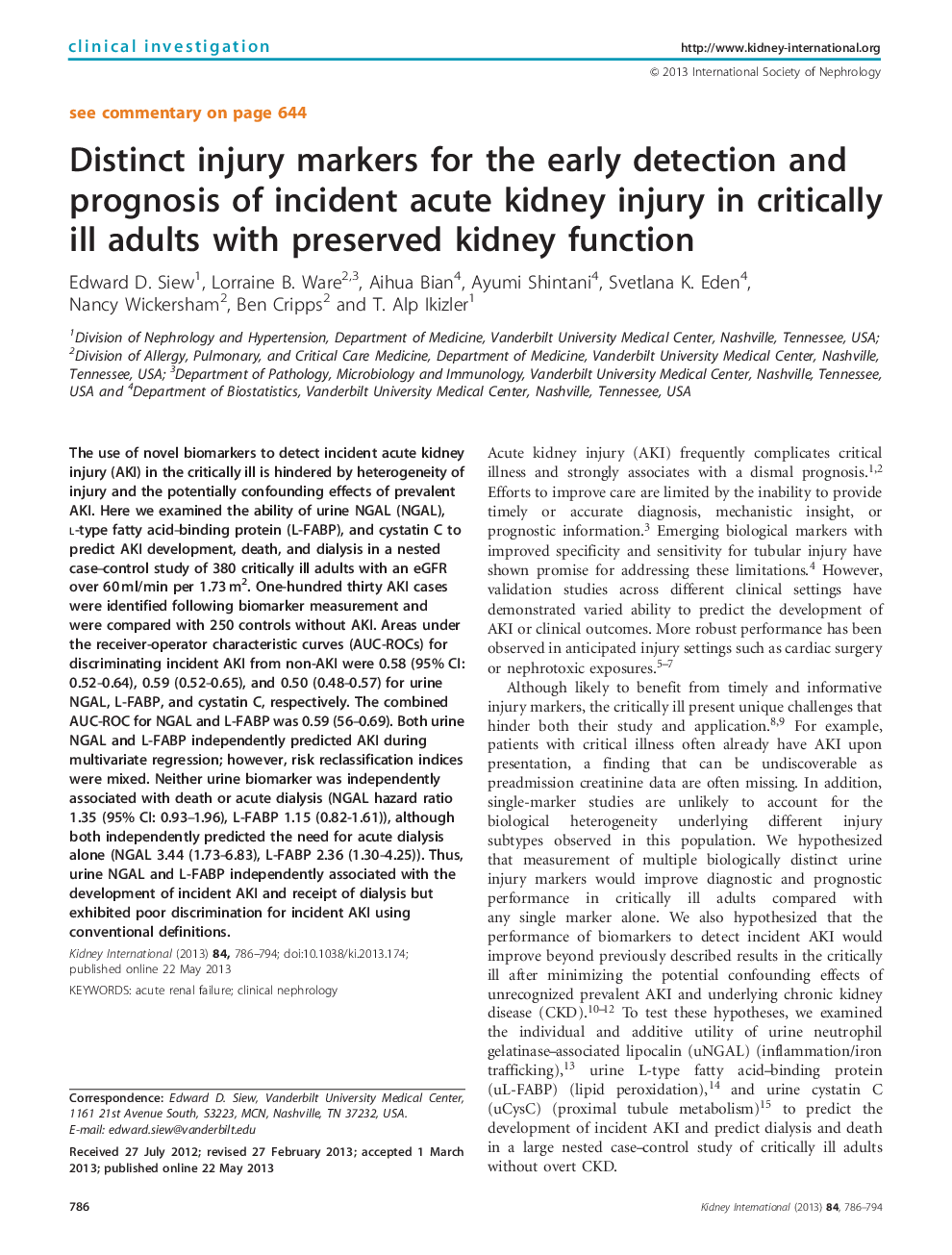| Article ID | Journal | Published Year | Pages | File Type |
|---|---|---|---|---|
| 3882948 | Kidney International | 2013 | 9 Pages |
The use of novel biomarkers to detect incident acute kidney injury (AKI) in the critically ill is hindered by heterogeneity of injury and the potentially confounding effects of prevalent AKI. Here we examined the ability of urine NGAL (NGAL), L-type fatty acid–binding protein (L-FABP), and cystatin C to predict AKI development, death, and dialysis in a nested case–control study of 380 critically ill adults with an eGFR over 60 ml/min per 1.73 m2. One-hundred thirty AKI cases were identified following biomarker measurement and were compared with 250 controls without AKI. Areas under the receiver-operator characteristic curves (AUC-ROCs) for discriminating incident AKI from non-AKI were 0.58 (95% CI: 0.52–0.64), 0.59 (0.52–0.65), and 0.50 (0.48–0.57) for urine NGAL, L-FABP, and cystatin C, respectively. The combined AUC-ROC for NGAL and L-FABP was 0.59 (56–0.69). Both urine NGAL and L-FABP independently predicted AKI during multivariate regression; however, risk reclassification indices were mixed. Neither urine biomarker was independently associated with death or acute dialysis (NGAL hazard ratio 1.35 (95% CI: 0.93–1.96), L-FABP 1.15 (0.82-1.61)), although both independently predicted the need for acute dialysis alone (NGAL 3.44 (1.73–6.83), L-FABP 2.36 (1.30–4.25)). Thus, urine NGAL and L-FABP independently associated with the development of incident AKI and receipt of dialysis but exhibited poor discrimination for incident AKI using conventional definitions.
